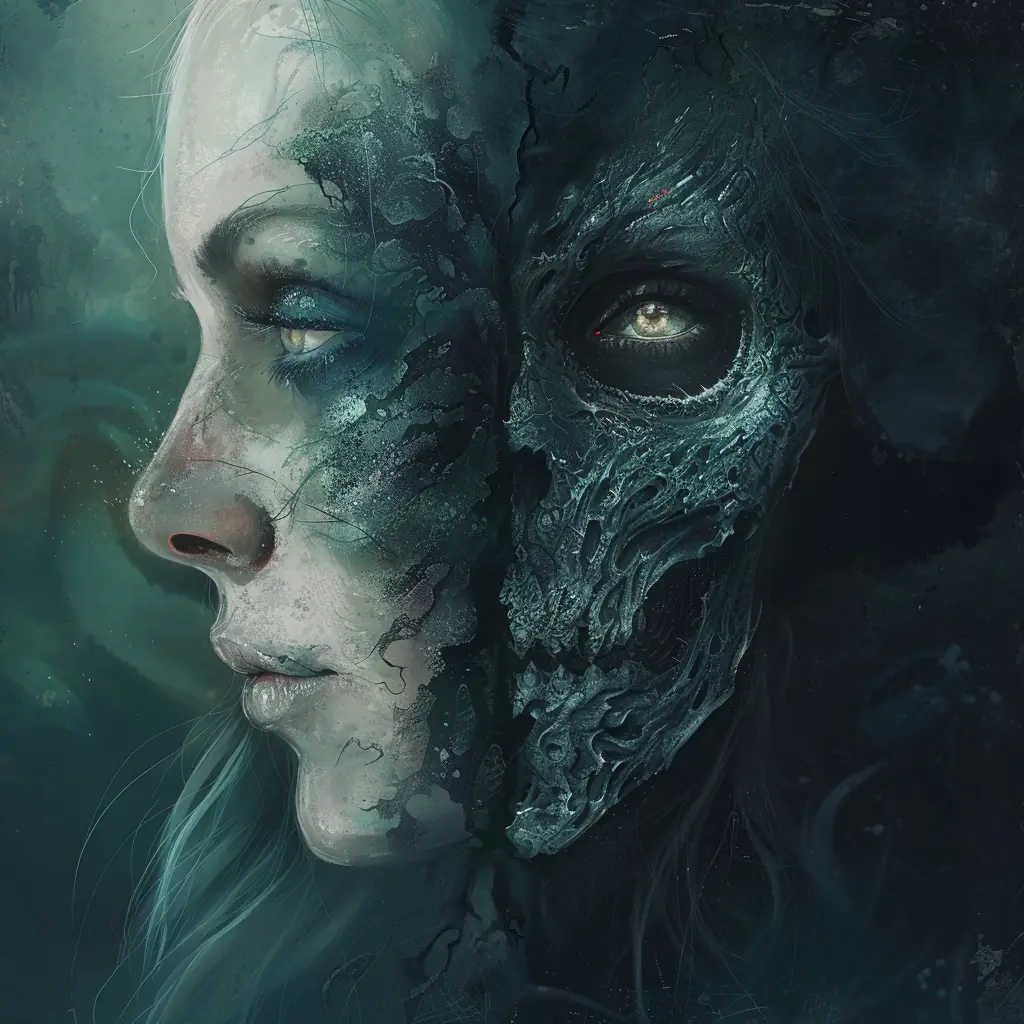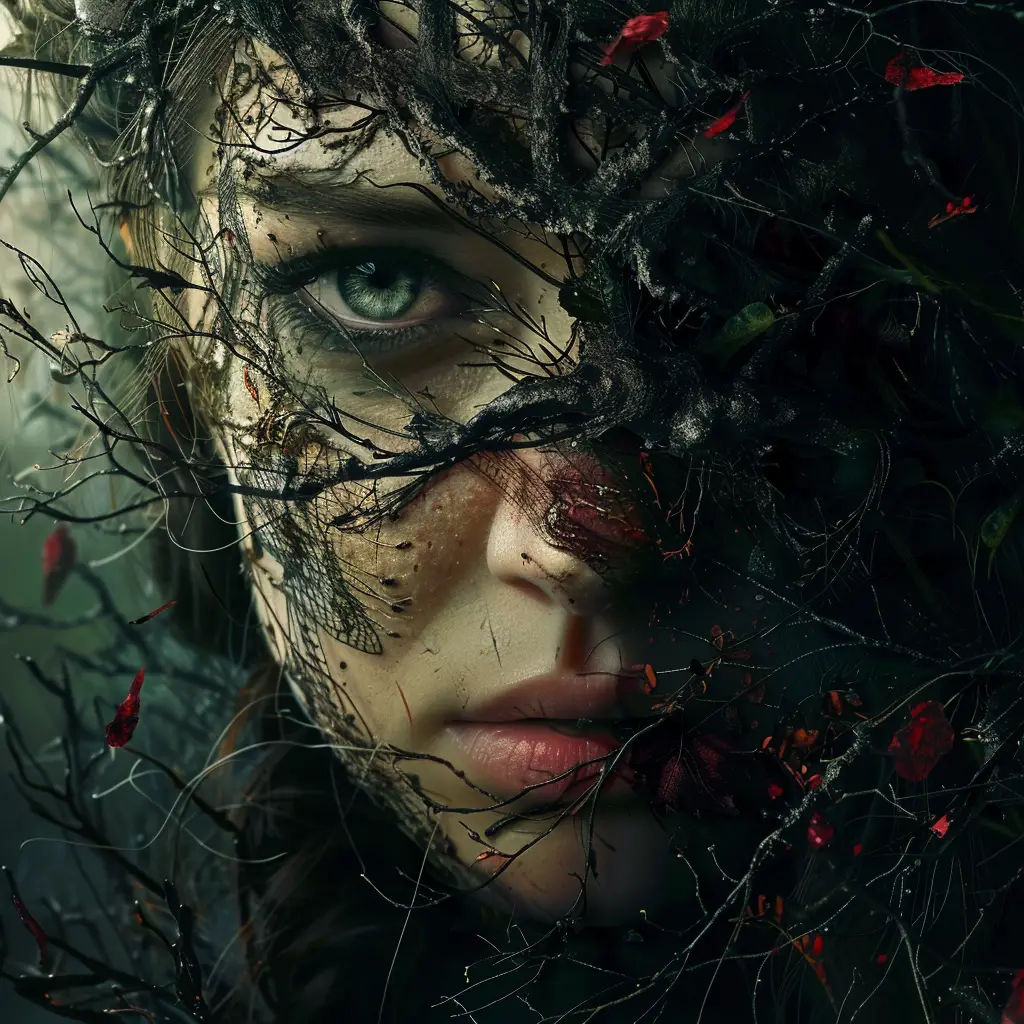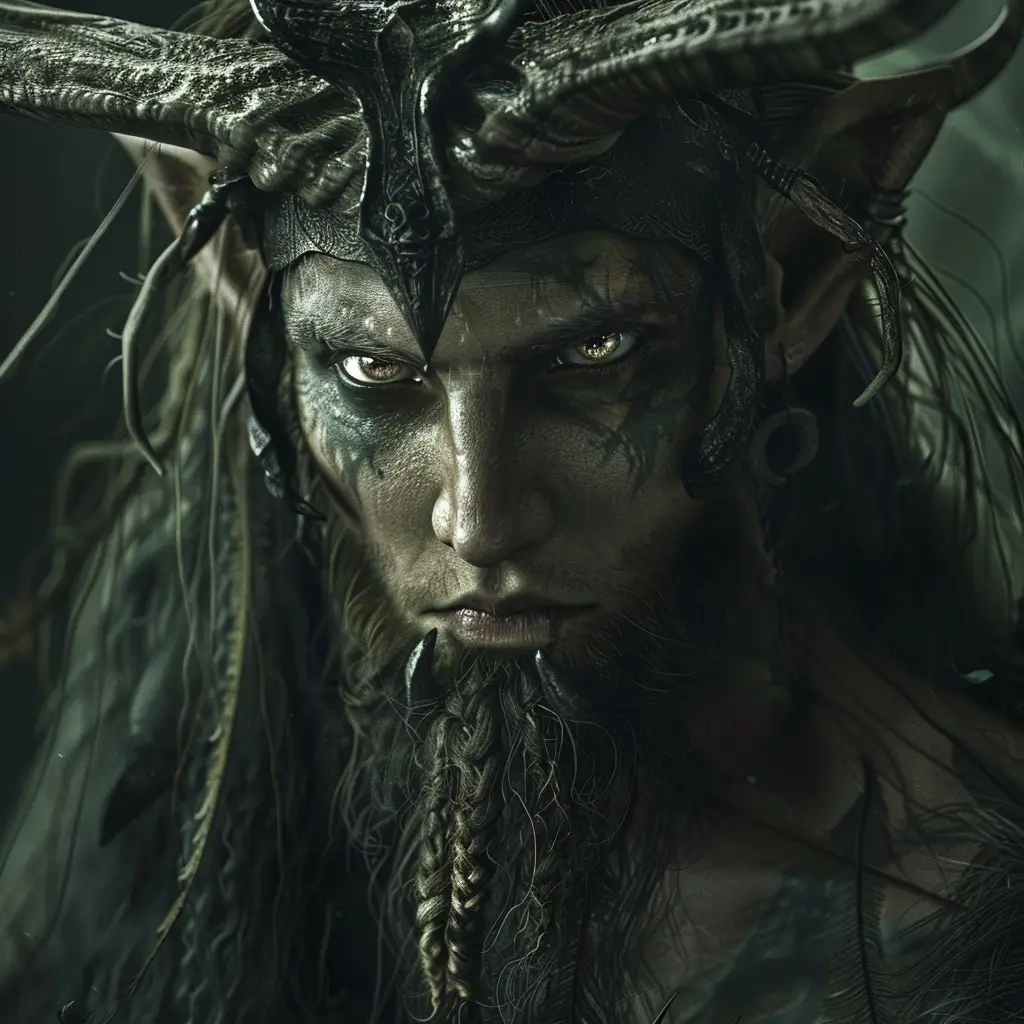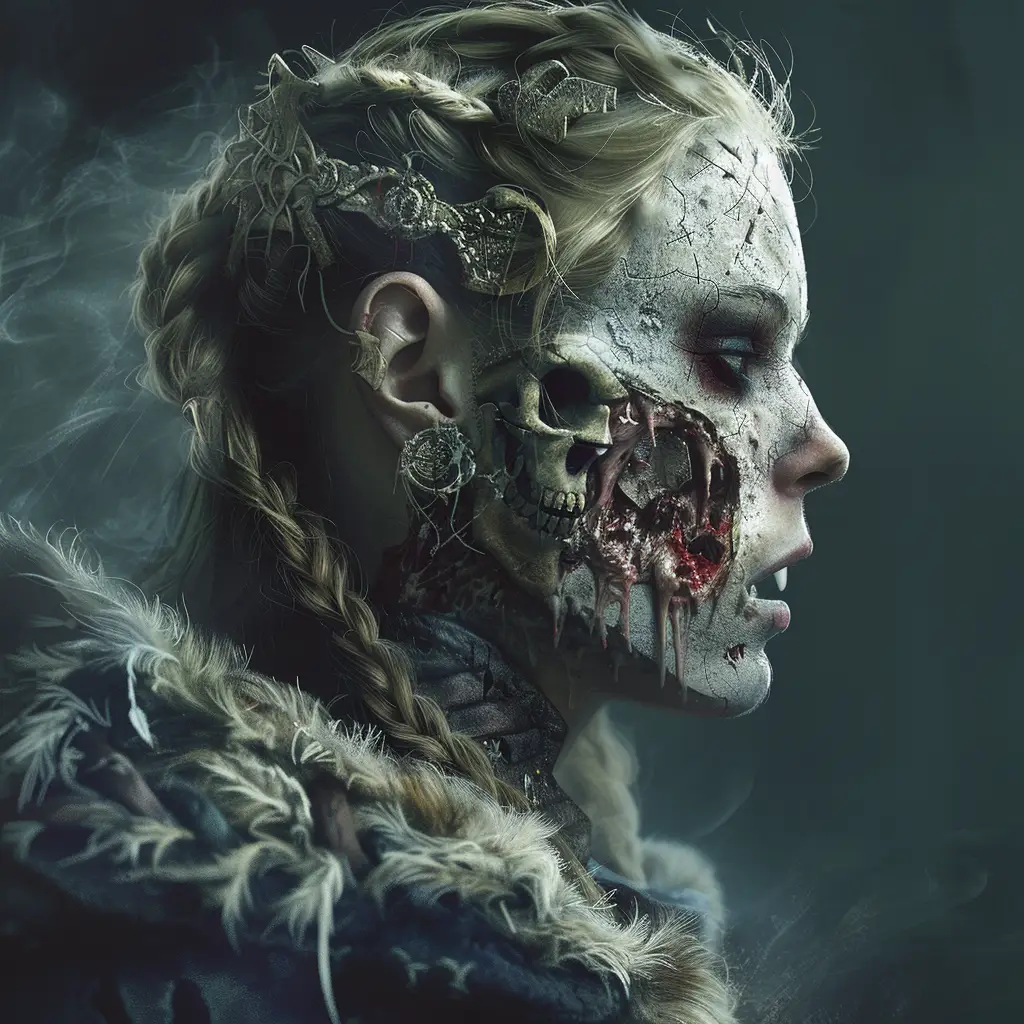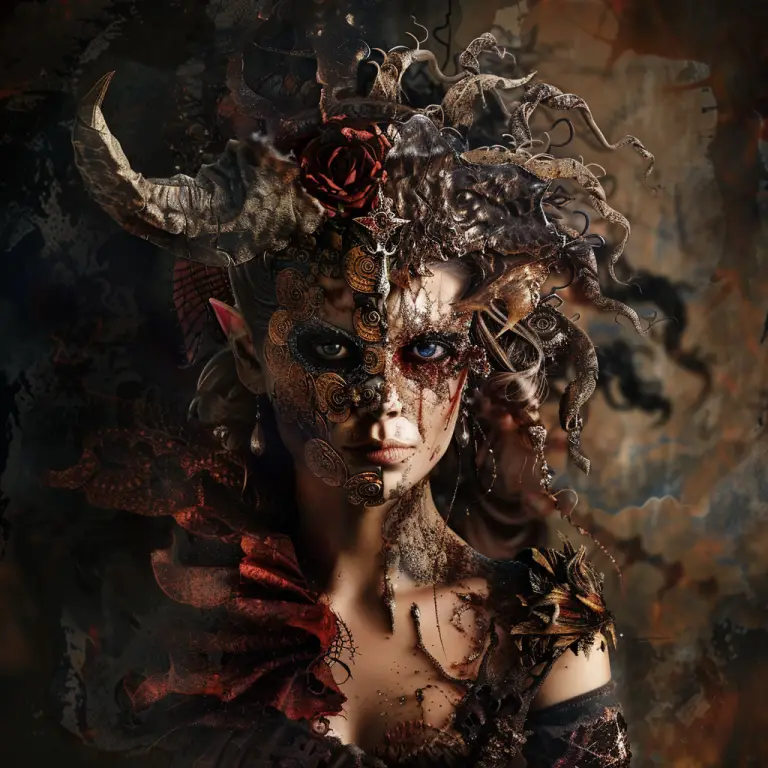Hel is a prominent and complex figure in Norse mythology, serving as both a deity and the ruler of the realm of the dead, also named Hel. She is a character deeply associated with death, the underworld, and the inevitable fate that awaits all mortals.
Origins and Family
Parentage: Hel is the daughter of Loki, the trickster god, and Angrboða, a giantess from Jötunheim. She has two siblings, Fenrir, the monstrous wolf, and Jörmungandr, the Midgard Serpent. These three children of Loki are often associated with chaos and destruction.
Appearance: Hel is usually depicted as having a striking, dual appearance. One half of her body is described as that of a living woman, while the other half is that of a decaying corpse. This dichotomy symbolizes her dominion over life and death.
The Realm of Hel
Description: The realm of Hel, sometimes called Helheim, is one of the nine worlds in Norse cosmology. It is located beneath the roots of Yggdrasil, the world tree, and is considered a cold, dark, and dreary place. It serves as the final destination for those who die of illness, old age, or other non-heroic deaths.
Inhabitants: Helheim is populated by the souls of the dead who did not die in battle and thus did not ascend to Valhalla or Folkvangr, the halls of Odin and Freyja, respectively. These souls are generally the ordinary dead, living in a shadowy existence under Hel’s rule.
Ruler: Hel presides over this realm, and she is both a stern and impartial guardian of the dead. She is tasked with ensuring that the souls remain in her domain and do not disturb the living.
Mythological Stories Involving Hel
The Death of Baldr: One of the most significant myths involving Hel is the story of Baldr, the beloved god of light and purity. After Baldr is killed by a trick of Loki, his soul is sent to Hel’s realm.
The gods plead with Hel to release Baldr, and she agrees on the condition that every being in the cosmos must weep for him. When Loki, disguised as the giantess Þökk, refuses to mourn, Hel denies Baldr’s release, thus highlighting her unyielding nature.
Ragnarök: During Ragnarök, the end-of-the-world battle in Norse mythology, Hel is prophesied to release the souls of the dead to join the forces of chaos against the gods.
Her role in this cataclysmic event underscores the inevitable clash between life and death, and the cyclical nature of existence in Norse beliefs.
Symbolism and Interpretation
Goddess of Death: Hel represents the unavoidable reality of death and the afterlife. Her dual nature reflects the transition from life to death and the different ways death can be perceived—both as a natural end and a source of fear and decay.
Impartial Judge: Hel’s role as the ruler of the underworld positions her as an impartial judge of souls. Unlike other death deities who may be more merciful or vengeful, Hel is depicted as fair and indifferent, maintaining the natural order.
Contrasting Realms: The existence of Helheim as a contrast to the more idyllic afterlives in Norse mythology, like Valhalla, emphasizes the diverse fates awaiting souls and the importance placed on heroic death in Norse culture.
Balancing Life and Death: Hel’s dominion over the dead reflects the Norse understanding of death as an integral part of life. Her domain, though bleak, is not necessarily a place of punishment but a necessary counterpart to the living world.
Hel in Modern Culture
Literature and Media: Hel appears in various modern adaptations of Norse mythology. She has been portrayed in a range of works from Neil Gaiman’s “American Gods” to Marvel’s “Thor: Ragnarok” where she is depicted as a powerful antagonist, albeit with significant creative liberties taken.
In many interpretations, she is depicted with a mix of fearsome power and tragic depth, reflecting her complex mythological roots.
Popular Culture: Hel has become a symbol of the underworld and death in popular culture. Her dual nature and the gloomy realm she oversees have influenced numerous depictions of death and the afterlife in books, movies, and games.
Influence on Symbolism: The figure of Hel continues to influence modern perceptions of death deities and underworld rulers, often being used to explore themes of mortality, justice, and the balance between life and death.
So our conclusion of hel..
Hel is a multifaceted figure in Norse mythology, representing the inevitability and impartiality of death. Her role as the ruler of the underworld and her connection to the prophecies of Ragnarök highlight the complex and cyclical nature of Norse cosmology. Despite her association with death, Hel is not merely a fearsome figure but also a crucial part of the mythological balance between life, death, and rebirth.
